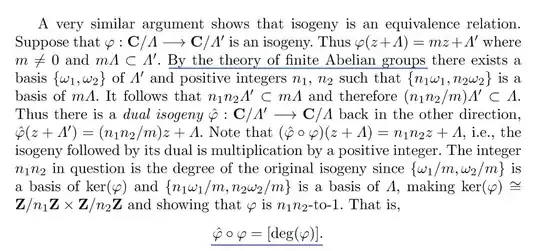The result about abelian groups is the following:
(i): let $M$ be a finitely generated, free abelian group. Then there exists a uniquely determined integer $r \geq 0$, called the rank of $M$, and a basis $v_1, ... , v_r$ of $M$: which is to say that the $v_i$ are elements of $M$ such that every element $m \in M$ can be expressed as $c_1v_1 + \cdots + c_rv_r$ for unique integers $c_1, ... , c_r$.
(ii): let $N$ be a subgroup of a finitely generated, free abelian group $M$. Let $d$ and $r$ be the ranks of $N$ and $M$. Then $d \leq r$, and there exists a basis $v_1, ... , v_r$ of $M$, as well as nonzero integers $a_1, ... , a_d$ such that $a_1v_1, ... , a_dv_d$ is a basis of $N$.
You can find a proof in most comprehensible linear algebra or abstract algebra textbooks. In the context you are seeing the result used, $\Lambda'$ and $m\Lambda$ are both finitely generated free abelian groups, each with rank $2$.
I don't immediately know the answer to your second question.
